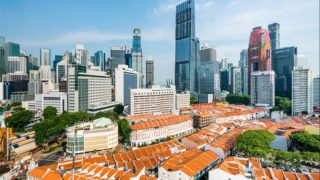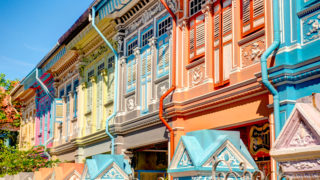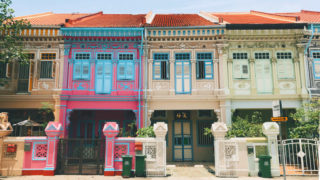Singapore has some beautiful and historical buildings including churches, synagogues, mosques and temples that highlight the multicultural and religious diversity and freedom of the country.
No matter your religious background, visiting any of these spots is an interesting – and often very tranquil – experience. Read on to find out more about 14 of Singapore’s most historically and architecturally rich places of worship!
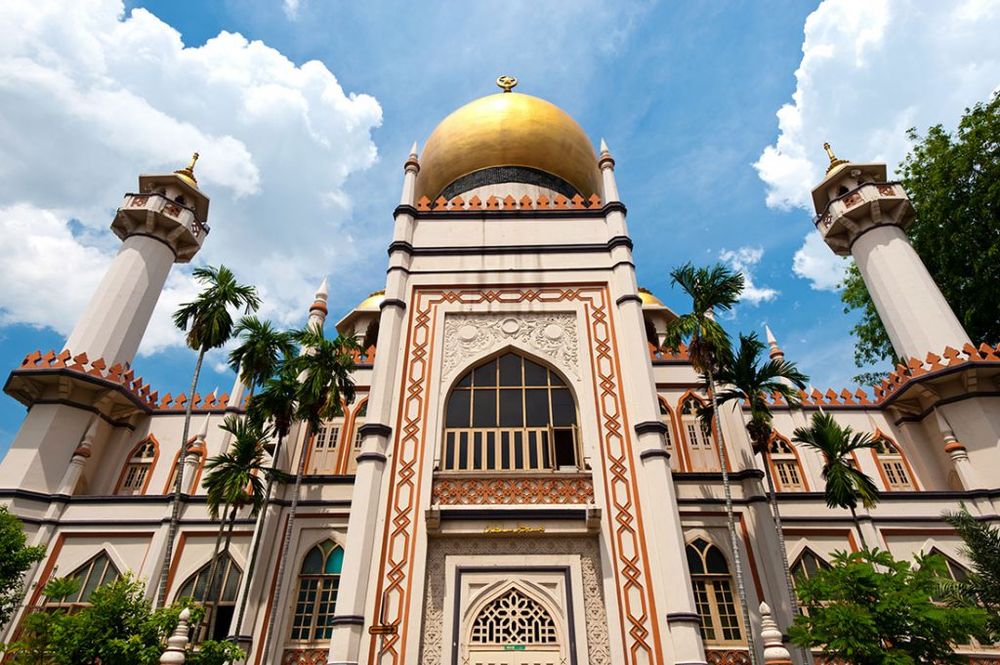
Masjid Sultan
Malay for “Sultan Mosque”, this remarkable structure and prominent Singapore landmark is located in Kampong Glam, or the Arab Quarter. Notable for its enormous golden domes, it was built in 1932 on the site of a much older mosque that was built in 1824, and designated as a national monument in 1975. Today, it offers services as well as classes, along with religious and legal counselling. The view of the building from the paved section of Bussorah Street is an Instagram favourite.
Armenian Church
This was the first Christian church in Singapore – designed by an Irish architect named George Coleman and built in 1835. Construction funds were raised mostly by Singapore Armenians, as well as Armenians of Calcutta and Java. The simple church originally had a bell tower, which has since been replaced by a spire. The vaulted ceiling and cupola reflects traditional Armenian Church architecture, and the painting above the altar is of Christ and his Apostles at the Last Supper.
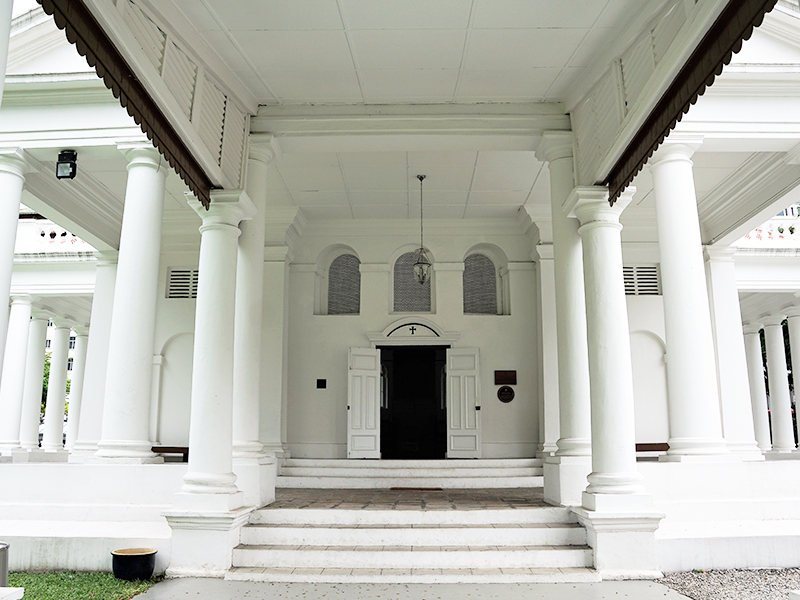
Sri Mariamman Temple
If you’ve walked through Chinatown, you’ll have seen the gorgeous gopuram (entrance tower) of the oldest Hindu temple in Singapore, originally a place of worship from people from Southern India. The first wooden structure was built in 1827 by a clerk who had accompanied Sir Stamford Raffles on his second visit to Singapore in May 1819. The temple contained a small deity of the goddess Mariamman, which can still be seen today. The building has undergone several renovations, with the stunning entrance being added in the 1960s. For many years, it was the only place Hindus could get married. Now, the main festival celebrated here is Theemithi (fire-walking ceremony), held annually in October/November.
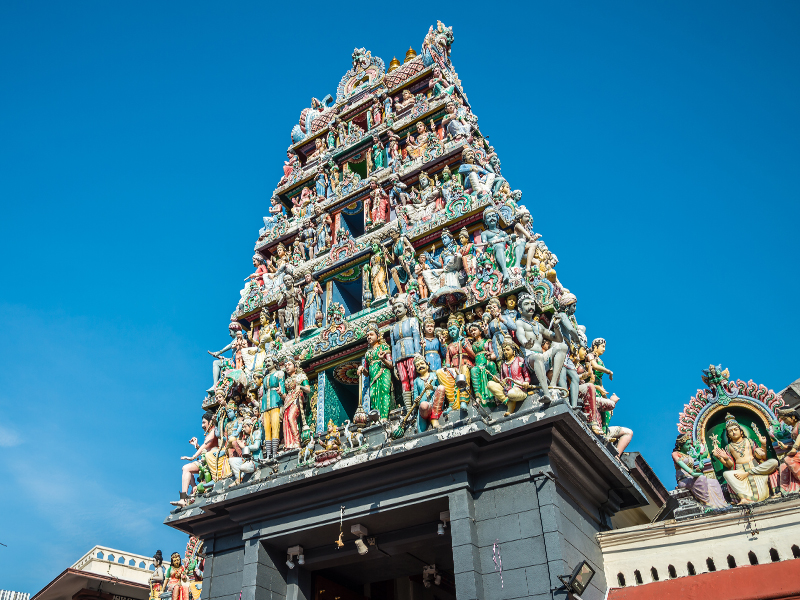
Maghain Aboth Synagogue
Hebrew for “Shield of Our Fathers”, Maghain Aboth was completed in 1878 and is the oldest and largest Jewish synagogue in Southeast Asia. The focus of the synagogue is an ornamented receptacle that holds Torah scrolls. The ark is covered with a parochet embroidered with Hebrew verses and designs, and faces westward towards Jerusalem, the Jewish holy city. Attached to the synagogue – located on Waterloo Street – is the Jacob Ballas Centre, built in 2007, which includes a full service kosher restaurant, kosher market and a social hall for festive meals and functions.
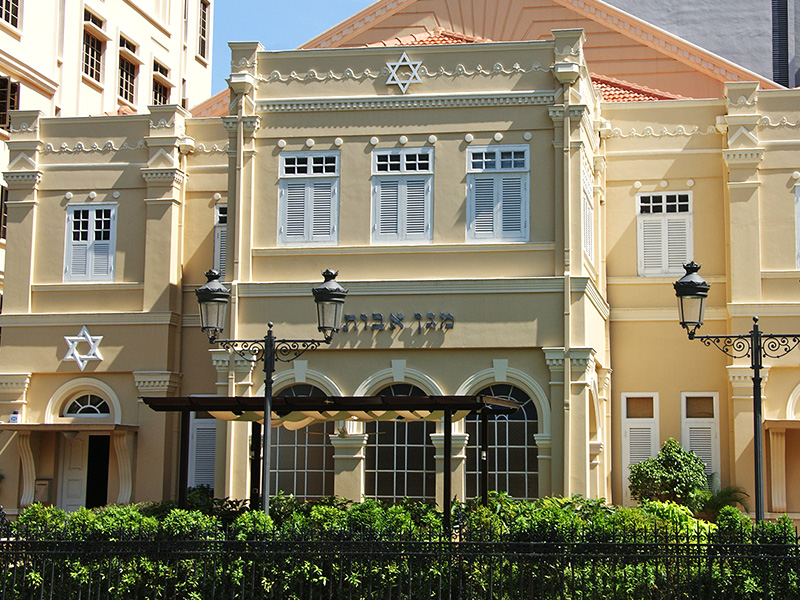
Thian Hock Keng
On their safe arrival by sea from China, Hokkien immigrants would go to this temple to give thanks to Mazu, a Chinese sea goddess. Built around 1821 to 1822 along the waterfront at the time, the temple represents an architectural style commonly found in Fujian. The “swallowtail” rooftop is perhaps its most noted feature. Major renovations have strived to preserve the original structure.
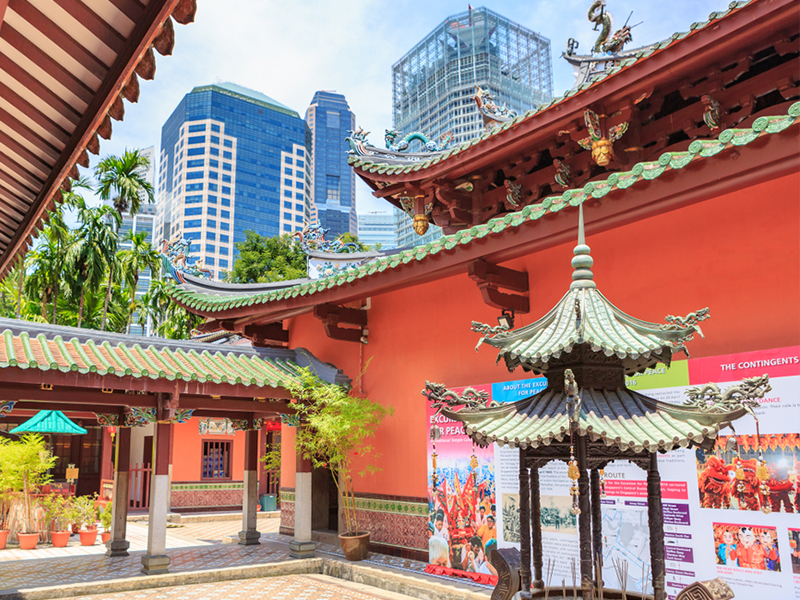
Buddha Tooth Relic Temple
This Tang Dynasty-style temple was completed in 2007 to house the tooth relic of Buddha and serve as a Chinese Buddhist cultural centre. Conceptualised and designed by Venerable Shi Fa Zhao, the designs incorporated a Northern Chinese style with strong influences from the Chinese Buddhist architectural style of the Tang Dynasty of China. Its meticulously crafted proposal went down to the colour of the lacquer paint for the edges of the awnings. The holds services regularly, and provides educational opportunities and welfare services. The complex also includes a museum with ancient artefacts.
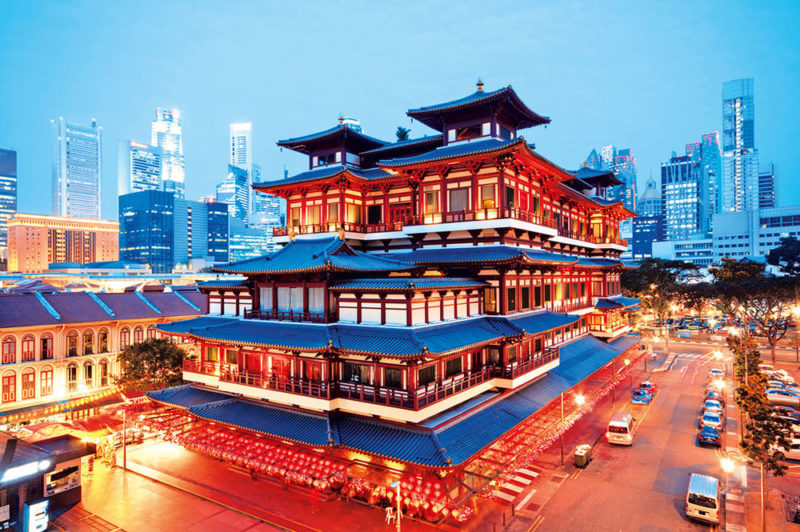
St. Andrew’s Cathedral
The current building of St. Andrew’s Cathedral was constructed between 1856 to 1861, although the church has existed at the site since 1836. It’s the oldest Anglican house of worship in Singapore and is the cathedral church of the Anglican Diocese in Singapore. The church was designed by in a neo-classical architectural style by George Coleman, who was inspired by classical Greek and Roman architecture.
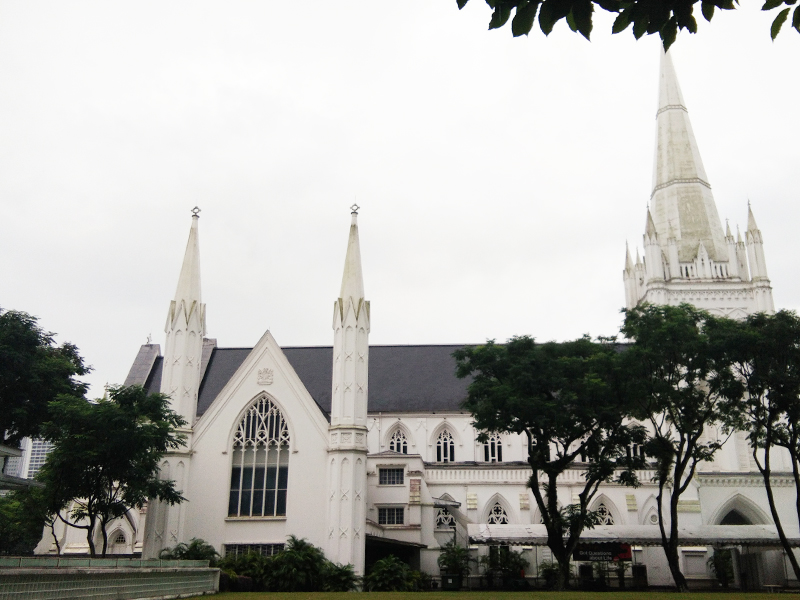
Novena Church
Commonly known as Novena Church, the Church of Saint Alphonsus was founded in 1935 and the first building was constructed in 1950. The current renovated building was unveiled in September 2017 and Gothic-inspired architecture. The name of this Catholic church refers to the novena prayer devotion on Saturdays and draws people from both Singapore and beyond.

Assyafaah Mosque
Opened in 2004 and located on Admiralty Lane, in Woodlands, Assyafaah Mosque hardly resembles a typical Muslim place of worship, as was intended. Forum Architects deliberately avoided domes, arches, and minarets in order to find a contemporary Singaporean-inspired design, rather than a Middle-Eastern inspired one. The architectural features of the building focus on spirituality, calmness, and unity, with natural light and stunningly high ceilings that punctuate the structure.
Chesed-El Synagogue
In 1905, the Chesed-El Synagogue was built through a need for more places of worship for the growing Jewish community in Singapore. Initiated by the Jewish philanthropist Manassah Meyer, the Synagogue stands as an elegant, artistic break from the bustle of the city in Oxley Rise, and comprises features from the late-Renaissance style of architecture.
Yueh Hai Ching Temple
While nobody is really sure when it was built, this is one of the oldest Taoist temples in Singapore. The earliest written record of the structure goes back to 1826, just seven years after Sir Stamford Raffles arrived. Originally built by Teochew immigrants, the temple sat on Singapore’s coastline to worship the Goddess of the Sea. Now, it’s surrounded by high-rises on Philip Street. A major feature of the building is the extensive use of tidal inlaid porcelain, the figures drawn from classic folktales or myths.
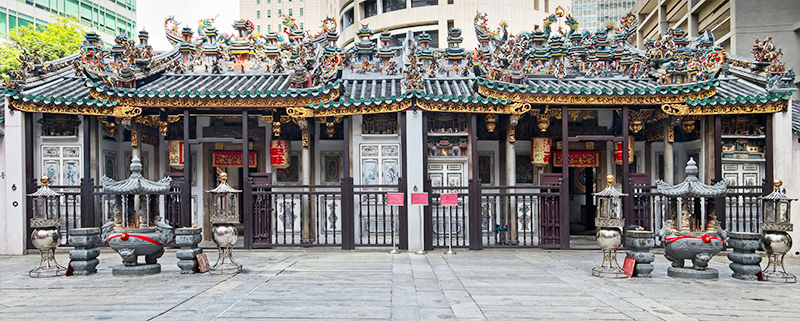
St George’s Church Singapore
If you walk from Tanglin or the Botanic Gardens up to Dempsey, you’ll pass this church on your way. Built between 1910 and 1913, it was used by British soldiers stationed in Tanglin Barracks, and still hosts regular Sunday services today. A mystery surrounds the location of the original stained glass windows of the church, which were removed and hidden by a chaplain as Japanese forces closed in on the area in the Second World War. The windows haven’t been seen since.
Masjid Abdul Gaffoor
Located at the eastern end of Dunlop Street in Little India, the current building of the Abdul Gaffoor Mosque was constructed in 1907; it was completely restored in 2003. It was erected on the site of a building known as Masjid Al-Abrar (1846), which served the religious needs of South Indian Muslim merchants. Today’s mosque is rich with architectural details, featuring a large onion dome, cinquefoil arches and a striking hexagonal-shaped tower.
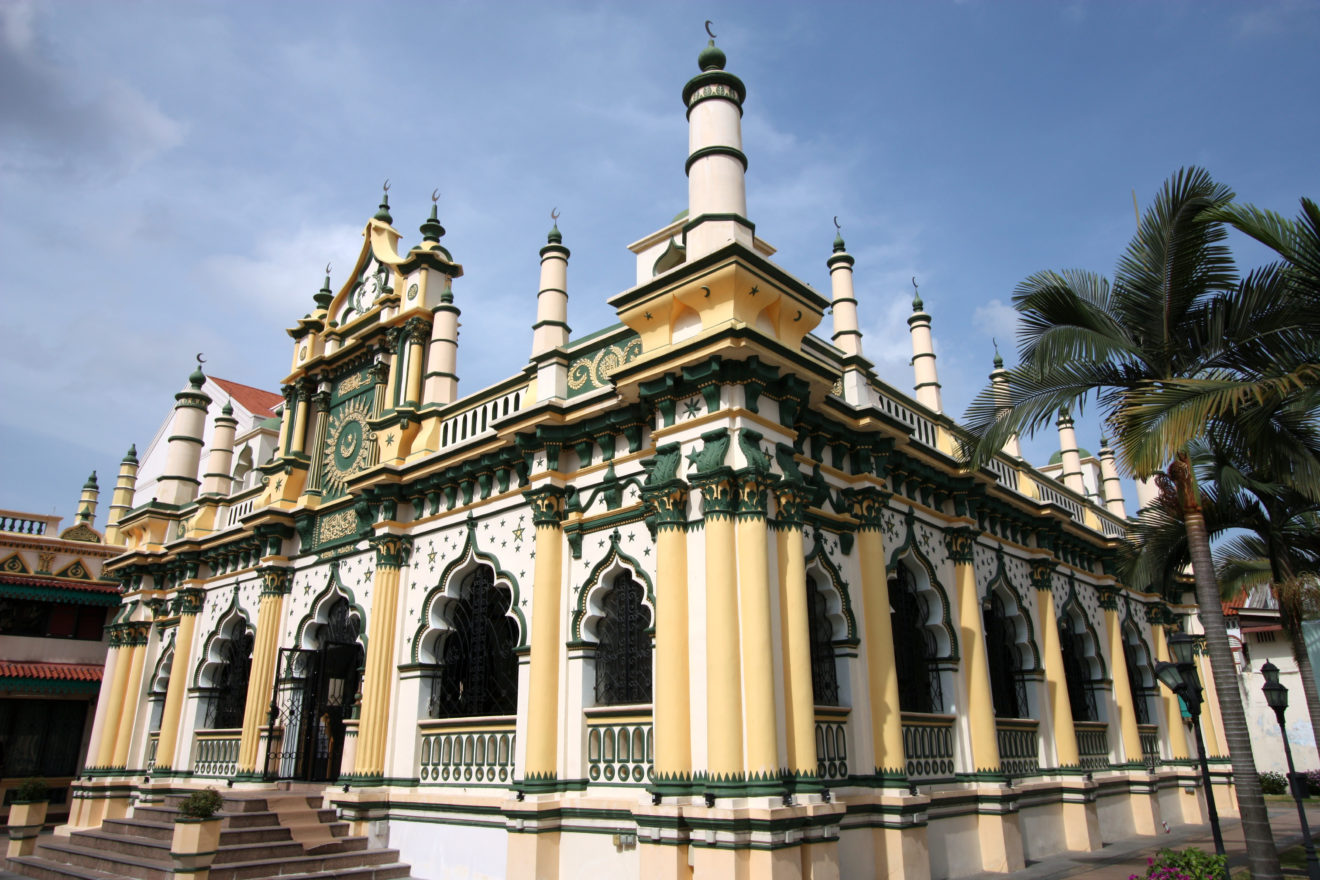
Nagore Dargah
Completed in 1830, this Indian Muslim temple was a memorial dedicated to Shahul Hamid, a saint from India who propagated Islam through his noble work and for curing the sick. The building is a replica of a structure in the South Indian state of Tamil Nadu, which houses Shahul Hamid. It is now an Indian Muslim Heritage Centre.
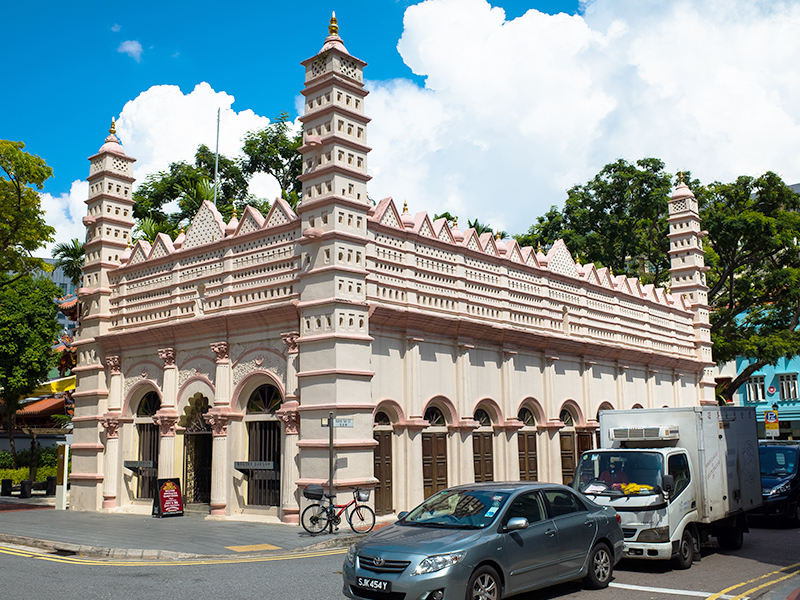
For more great info on life in Singapore, head here.
Don't miss out on the latest events, news and
competitions by signing up to our newsletter!
By signing up, you'll receive our weekly newsletter and offers which you can update or unsubscribe to anytime.

